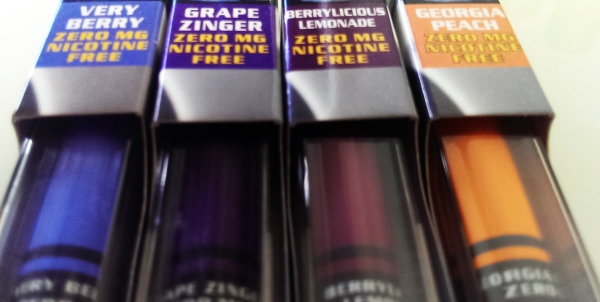
A news story about a kid purchasing an e-cigarette is bound to get those opposed to the technology up in arms, and a recent story from British Columbia drives that fact home very clearly indeed.
The province’s medical health officer Dr. Perry Kendal repeated the tired old “it’s an unregulated product” lines, repeating fears that “there’s a danger they become attractive to young people” after hearing the news.
Ordinarily, this would be where we went over the research on the topic (which, if you’re interested, confirms that young people who vape are almost all smokers, and no non-smoking youth has been documented to go from vaping to regular smoking), but there’s something especially ridiculous about this particular story. The e-cigarette didn’t even contain nicotine.
What Happened?

An 11 year old boy from the suburban community of Tsawwassen in British Columbia went down to a local store, the Lottery Ticket Center, and picked up a nicotine-free e-cig for $10. The store owner Jasper Lee said he was “very sorry” for allowing the sale, and thought it was just like selling a candy cigar or a stick of licorice. The boy returned home apparently happy with his purchase, going to tell his father and trying to blow some vapor-rings. His dad was incensed, and stormed down to the store to get a refund and a frank apology.
The reporting of this incident is very much focused on the unproven and fairly unrealistic imaginary scenario that kids who wouldn’t otherwise have smoked will be lured into lifelong addiction through their experimentation with e-cigarettes. Of course, it would be fairly shocking to walk past an 11 year old on the street who was vaping, but can we really deny that children are going to try to emulate adult behaviors? With some people still continuing to enjoy an – albeit deadly – fully legal substance as consenting and free individuals, can we really say that this young boy wouldn’t have just pretended to smoke with a pen and the visual assistance of warm breath on a cold morning if e-cigs didn’t exist? Isn’t this fascination one of the reasons children still smoke in significant numbers?
Unless you’re trying to stimulate fear of e-cigarettes or bag yourself readers for a news article, the answers are fairly obvious. It’s a fact of developmental neurology that teens are more likely to engage in behavior like smoking. With fully developed “reward” pathways but still-forming higher decision making areas – responsible for things like accurately weighing potential consequences of our actions – it’s an inevitability that some teens and developing kids will find a way to put themselves at risk.
Youth E-Cig Use and the Fear of Smoking
These are interesting and challenging issues, but with the undeniable risks of smoking, it’s understandably worrying for any child to develop a smoking-like behavior. But we need to be sensible. This kid didn’t smoke (as many do), nor did he even consume an addictive drug (unless he, I don’t know, drank some coffee), and yet there is still concern.
Dr. Perry Kendall wants to crack down on nicotine-free e-cigs for fear they’ll lure kids into addiction, in blind ignorance of the underlying desire that led the child to want to do something that looks like smoking in the first place. This isn’t normal behavior. Something in this kid made him choose to take this action at such a young age, and it’s absurd to think that e-cigarettes serve as anything other than much, much safer outlet for this pre-existing interest.
In fact, there’s no evidence that nicotine-containing e-cigs lead kids into long-term vaping (and even less suggesting a smoking “gateway” of any kind), so without nicotine you’re just left with a kid vaporizing food flavorings and the stuff they widely use in pharmaceuticals, shampoos and fog machines. How you’d accomplish a ban on kids buying batteries, food flavorings or a very safe and widely-used chemical is another matter entirely.
However, it must be said that it’s not good to encourage smoking-like behavior, and – although there’s no reason to be particularly worried about it – there’s no real point in letting kids vape non-nicotine liquids, so a law prohibiting it wouldn’t be entirely idiotic.
The only problem you run into is when you start to ask those sensible questions again. This kid wanted to blow smoke rings – how would he have pursued that interest otherwise? From a public health perspective, isn’t the small, unproven risk of him progressing to smoking from non-nicotine vaping worth taking to discourage him from trying a cigarette to fulfill his sensory interest?
Conclusion – Another Opportunity to Criticize E-Cigs
Yet again, this seems nothing other than a single case in the media, backed by an outraged doctor, which will come to outweigh the significant evidence against the “e-cigs are a gateway to smoking” hypothesis in the minds of the public, and sadly, many lawmakers. It’s another sad chapter in which scare-stories are promoted and results of research into this issue are either misinterpreted or hidden.

